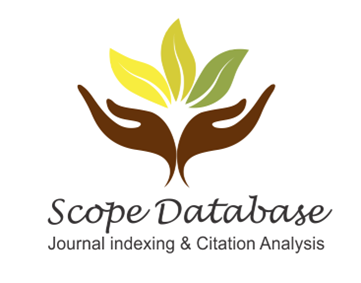O PAPEL DA COMPETÊNCIA DIGITAL NO MONITORAMENTO DE SAÚDE COM IA PARA IDOSOS: UM ESTUDO QUANTITATIVO SOBRE A EFICÁCIA DO SISTEMA
Digital Competency in Elderly Health Monitoring
DOI:
https://doi.org/10.71328/jht.v6i1.64Palavras-chave:
Monitoramento Remoto com IA, Cuidado de Idosos, Dados de Saúde em Tempo Real, Recomendações Personalizadas, Alfabetização DigitalResumo
Este estudo investiga como o processamento de dados de saúde em tempo real e as recomendações personalizadas baseadas em IA afetam a efetividade dos sistemas de monitoramento remoto para idosos. Também analisa o papel da alfabetização digital na moderação da relação entre a coleta de dados em tempo real e a eficácia do sistema. Utilizando uma abordagem quantitativa, os dados foram coletados por meio de uma pesquisa online com 385 participantes, incluindo idosos, cuidadores e profissionais da saúde. As respostas foram medidas em uma escala Likert de 5 pontos, e a amostra foi selecionada por amostragem estratificada intencional para garantir diversidade. A confiabilidade e validade foram verificadas por meio do alfa de Cronbach, análise fatorial exploratória e regressão linear múltipla. Os resultados indicam que tanto o processamento de dados quanto as recomendações personalizadas aumentam significativamente a efetividade do sistema. A alfabetização digital, em especial, fortalece o impacto positivo do processamento de dados no desempenho do sistema, ressaltando a importância das competências do usuário. O estudo aplica as teorias do Ajuste Cognitivo, da Seletividade Socioemocional e da Divisão Digital, oferecendo contribuições práticas para desenvolvedores, profissionais da saúde e formuladores de políticas.
Downloads
Referências
Ahmed, S., Irfan, S., Kiran, N., Masood, N., Anjum, N., & Ramzan, N. (2023). Remote Health Monitoring Systems for Elderly People: A Survey. Sensors, 23(16), 7095. https://doi.org/10.3390/s23167095 DOI: https://doi.org/10.3390/s23167095
Alexandru, A., Ianculescu, M., & Paraschiv, E. A. (2024). Harnessing the Capabilities of IoHT-Based Remote Monitoring Systems for Decision Making in Elderly Healthcare. In Decision Making and Decision Support in the Information Era: Dedicated to Academician Florin Filip (pp. 147-184). Cham: Springer Nature Switzerland. https://doi.org/10.1007/978-3-031-62158-1_10 DOI: https://doi.org/10.1007/978-3-031-62158-1_10
Babbie, E. (2010). The practice of social research. 12th ed. Belmont, CA: Wadsworth Cengage.
Bandura, A. (1986). Social foundations of thought and action. Englewood Cliffs, NJ, 1986(23-28), 2.
Batool, I. (2025). RealTime Health Monitoring Using 5G Networks: A Deep Learning-Based Architecture for Remote Patient Care. arXiv. https://doi.org/10.48550/arXiv.2501.01027
Brown, Z., Bergman, D., Holt, L., Miller, K., Frownfelter, J., Bleau, H., ... & Ball, T. (2023). Augmenting a transitional care model with artificial intelligence decreased readmissions. Journal of the American Medical Directors Association, 24(7), 958-963. https://doi.org/10.1016/j.jamda.2023.03.005 DOI: https://doi.org/10.1016/j.jamda.2023.03.005
Capan, M., Hoover, S., Miller, K. E., Pal, C., Glasgow, J. M., Jackson, E. V., & Arnold, R. C. (2018). Data-driven approach to early warning score-based alert management. BMJ open quality, 7(3), e000088. https://pubmed.ncbi.nlm.nih.gov/30167470/ DOI: https://doi.org/10.1136/bmjoq-2017-000088
Carstensen, L. L. (1993, January). Motivation for social contact across the life span: A theory of socioemotional selectivity. In Nebraska symposium on motivation (Vol. 40, pp. 209-254).
Castilla, D., Botella, C., Miralles, I., Bretón-López, J., Dragomir-Davis, A. M., Zaragoza, I., & Garcia-Palacios, A. (2018). Teaching digital literacy skills to the elderly using a social network with linear navigation: A case study in a rural area. International Journal of Human-Computer Studies, 118, 24-37. https://doi.org/10.1016/j.ijhcs.2018.05.009 DOI: https://doi.org/10.1016/j.ijhcs.2018.05.009
Charness, N., & Boot, W. R. (2009). Aging and Information Technology Use: Potential and Barriers. Current Directions in Psychological Science, 18(5), 253-258. https://doi.org/10.1111/j.1467-8721.2009.01647.x DOI: https://doi.org/10.1111/j.1467-8721.2009.01647.x
Chen, L., Jia, J., Xiao, M., Wu, C., & Zhang, L. (2024). A study on the influence of digital literacy on elderly user’s intention to identify social media false information. The Electronic Library, 42(5), 701-721. https://doi.org/10.1108/EL-10-2023-0257 DOI: https://doi.org/10.1108/EL-10-2023-0257
Chen, Y. H. J., Lin, C. S., Lin, C., Tsai, D. J., Fang, W. H., Lee, C. C., ... & Chen, S. J. (2023). An AI-enabled dynamic risk stratification for emergency department patients with ECG and CXR integration. Journal of Medical Systems, 47(1), 81. https://doi.org/10.1007/s10916-023-01980-x DOI: https://doi.org/10.1007/s10916-023-01980-x
Chin, J., Payne, B., Gao, X., Conner-Garcia, T., Graumlich, J. F., Murray, M. D., … Stine-Morrow, E. A. L. (2014). Memory and comprehension for health information among older adults: Distinguishing the effects of domain-general and domain-specific knowledge. Memory, 23(4), 577–589. https://doi.org/10.1080/09658211.2014.912331 DOI: https://doi.org/10.1080/09658211.2014.912331
Chow, M., Herold, D. K., Choo, T. M., & Chan, K. (2012). Extending the technology acceptance model to explore the intention to use Second Life for enhancing healthcare education. Computers & education, 59(4), 1136-1144. https://doi.org/10.1016/j.compedu.2012.05.011 DOI: https://doi.org/10.1016/j.compedu.2012.05.011
Coiera, E. (2015). Guide to health informatics. CRC press. DOI: https://doi.org/10.1201/b13617
Creswell, J.W. and Creswell, J.D., (2017). Research design: Qualitative, quantitative, and mixed methods approaches. Sage publications.
Cummings, M. L. (2006). Integrating ethics in design through the value-sensitive design approach. Science and engineering ethics, 12, 701-715. https://doi.org/10.1007/s11948-006-0065-0 DOI: https://doi.org/10.1007/s11948-006-0065-0
Davis, F. D. (1989). Perceived Usefulness, Perceived Ease of Use, and User Acceptance of Information Technology. MIS Quarterly, 13(3), 319–340. https://doi.org/10.2307/249008 DOI: https://doi.org/10.2307/249008
Davis, F. D., Granić, A., & Marangunić, N. (2024). The technology acceptance model: 30 years of TAM. Switzerland: Springer International Publishing AG. DOI: https://doi.org/10.1007/978-3-030-45274-2
Dhar, R., Kumar, A., & Karmakar, S. (2023). Smart wearable devices for real-time health monitoring. Asian Journal of Medical Sciences, 14(12), 1-3. https://doi.org/10.3126/ajms.v14i12.58664 DOI: https://doi.org/10.3126/ajms.v14i12.58664
Evangelista, L. S., Moser, D. K., Lee, J. A., Moore, A. A., Ghasemzadeh, H., Sarrafzadeh, M., & Mangione, C. M. (2015). Examining older adults’ perceptions of usability and acceptability of remote monitoring systems to manage chronic heart failure. Gerontology and geriatric medicine, 1, 2333721415618050. https://doi.org/10.1177/2333721415618050 DOI: https://doi.org/10.1177/2333721415618050
Feng, J., Phillips, R. V., Malenica, I., Bishara, A., Hubbard, A. E., Celi, L. A., & Pirracchio, R. (2022). Clinical artificial intelligence quality improvement: towards continual monitoring and updating of AI algorithms in healthcare. NPJ digital medicine, 5(1), 66. https://doi.org/10.1038/s41746-022-00611-y DOI: https://doi.org/10.1038/s41746-022-00611-y
Fishbein, M., & Ajzen, I. (1977). Belief, attitude, intention, and behavior: An introduction to theory and research.
Fowe, I. E., Sanders, E. C., & Boot, W. R. (2023). Understanding barriers to the collection of mobile and wearable device data to monitor health and cognition in older adults: A scoping review. AMIA Joint Summits on Translational Science Proceedings, 2023, 186–195. https://pubmed.ncbi.nlm.nih.gov/37350920/
Habibi, F., Ghaderkhani, S., Shokoohi, M., Banari, T., Morsali, M., Abadi, R. N. S., & Kiamehr, H. (2025). Harnessing artificial intelligence in Alzheimer's disease management: navigating ethical challenges in AI. AI and Ethics, 1-17. https://doi.org/10.1007/s43681-025-00673-0 DOI: https://doi.org/10.1007/s43681-025-00673-0
Hennebelle, A., Dieng, Q., Ismail, L., & Buyya, R. (2024, December). SmartEdge: Smart Healthcare End-to-End Integrated Edge and Cloud Computing System for Diabetes Prediction Enabled by Ensemble Machine Learning. In 2024 IEEE International Conference on Cloud Computing Technology and Science (CloudCom) (pp. 127-134). IEEE. https://doi.org/10.48550/arXiv.2502.15762 DOI: https://doi.org/10.1109/CloudCom62794.2024.00031
Ho, A. (2020). Are we ready for artificial intelligence health monitoring in elder care?. BMC geriatrics, 20(1), 358. https://doi.org/10.1186/s12877-020-01764-9 DOI: https://doi.org/10.1186/s12877-020-01764-9
Holden, R. J., & Karsh, B. T. (2010). The technology acceptance model: its past and its future in health care. Journal of biomedical informatics, 43(1), 159-172. https://doi.org/10.1016/j.jbi.2009.07.002 DOI: https://doi.org/10.1016/j.jbi.2009.07.002
Hong, S., Xu, Y., Khare, A., Priambada, S., Maher, K., Aljiffry, A., ... & Tumanov, A. (2020, August). Holmes: health online model ensemble serving for deep learning models in intensive care units. In Proceedings of the 26th ACM SIGKDD International Conference on Knowledge Discovery & Data Mining (pp. 1614-1624). https://doi.org/10.48550/arXiv.2008.04063 DOI: https://doi.org/10.1145/3394486.3403212
Iqbal, S. (2023, March). Artificial Intelligence tools and applications for elderly healthcare-review. In Proceedings of the 2023 9th International Conference on Computing and Artificial Intelligence (pp. 394-397). http://dx.doi.org/10.1145/3594315.3594347 DOI: https://doi.org/10.1145/3594315.3594347
Islam, S. R., Kwak, D., Kabir, M. H., Hossain, M., & Kwak, K. S. (2015). The internet of things for health care: a comprehensive survey. IEEE access, 3, 678-708. https://doi.org/10.1109/ACCESS.2015.2437951 DOI: https://doi.org/10.1109/ACCESS.2015.2437951
Jafleh, E. A., Alnaqbi, F. A., Almaeeni, H. A., Faqeeh, S., Alzaabi, M. A., Al Zaman, K., ... & Alzaabi, M. (2024). The role of wearable devices in chronic disease monitoring and patient care: a comprehensive review. Cureus, 16(9). DOI: https://doi.org/10.7759/cureus.68921
Katirai, A. (2023). The ethics of advancing artificial intelligence in healthcare: analyzing ethical considerations for Japan’s innovative AI hospital system. Frontiers in Public Health, 11, 1142062. https://doi.org/10.3389/fpubh.2023.1142062 DOI: https://doi.org/10.3389/fpubh.2023.1142062
King, W. R., & He, J. (2006). A meta-analysis of the technology acceptance model. Information & management, 43(6), 740-755. https://doi.org/10.1016/j.im.2006.05.003 DOI: https://doi.org/10.1016/j.im.2006.05.003
Kirschner, P. A. (2002). Cognitive load theory: Implications of cognitive load theory on the design of learning. Learning and instruction, 12(1), 1-10. https://doi.org/10.1016/S0959-4752(01)00014-7 DOI: https://doi.org/10.1016/S0959-4752(01)00014-7
Kyung, N., & Kwon, H. E. (2022). Rationally trust, but emotionally? The roles of cognitive and affective trust in laypeople's acceptance of AI for preventive care operations. Production and Operations Management. https://doi.org/10.1111/poms.13785 DOI: https://doi.org/10.1111/poms.13785
Ma, B., Yang, J., Wong, F. K. Y., Wong, A. K. C., Ma, T., Meng, J., ... & Lu, Q. (2023). Artificial intelligence in elderly healthcare: A scoping review. Ageing Research Reviews, 83, 101808. https://doi.org/10.1016/j.arr.2022.101808 DOI: https://doi.org/10.1016/j.arr.2022.101808
Ma, J., Wang, J., Ying, J., Xie, S., Su, Q., Zhou, T., ... & Bian, X. (2024). Long-Term Efficacy of an AI-Based Health Coaching Mobile App in Slowing the Progression of Nondialysis-Dependent Chronic Kidney Disease: Retrospective Cohort Study. Journal of Medical Internet Research, 26, e54206. https://doi.org/10.2196/54206 DOI: https://doi.org/10.2196/54206
MarketandMarkets (2024, February). Wearable Healthcare Devices Market: Growth, Size, Share, and Trends. https://www.marketsandmarkets.com/Market-Reports/wearable-medical-device-market-81753973.html
Meyer, J. H. F., & Land, R. (2003). Threshold concepts and troublesome knowledge: Linkages to ways of thinking and practising within the disciplines. In C. Rust (Ed.), Improving student learning: Improving student learning theory and practice – Ten years on (pp. 412–424). Oxford: Oxford Centre for Staff and Learning Development.
Mbata, A. O., Soyege, O. S., Nwokedi, C. N., Tomoh, B. O., Mustapha, A. Y., Balogun, O. D., ... & Iguma, D. R. (2024). Preventative Medicine and Chronic Disease Management: Reducing Healthcare Costs and Improving Long-Term Public Health. International Journal of Multidisciplinary Research and Growth Evaluation, 5(06), 1584-1600. https://doi.org/10.54660/.IJMRGE.2024.5.6.1584-1600 DOI: https://doi.org/10.54660/.IJMRGE.2024.5.6.1584-1600
Neves, B. B., Petersen, A., Vered, M., Carter, A., & Omori, M. (2023). Artificial intelligence in long-term care: technological promise, aging anxieties, and sociotechnical ageism. Journal of Applied Gerontology, 42(6), 1274-1282. https://doi.org/10.1177/07334648231157370 DOI: https://doi.org/10.1177/07334648231157370
Nurani, B., Kabir, F., Munmun, Z. S., & Akter, R. (2025). Artificial Intelligence and Big Data for Personalized Preventive Healthcare: Predicting Health Risks and Enhancing Patient Adherence. Open Access Library Journal, 12(1), 1-17. https://doi.org/10.4236/oalib.1112873 DOI: https://doi.org/10.4236/oalib.1112873
Lee, C. H., Wang, C., Fan, X., Li, F., & Chen, C. H. (2023). Artificial intelligence-enabled digital transformation in elderly healthcare field: scoping review. Advanced engineering informatics, 55, 101874. https://doi.org/10.1016/j.aei.2023.101874 DOI: https://doi.org/10.1016/j.aei.2023.101874
Li, S., Cui, G., Yin, Y., & Xu, H. (2023). Associations between health literacy, digital skill, and eHealth literacy among older Chinese adults: a cross-sectional study. Digital health, 9, https://doi.org/10.1177/20552076231178431 DOI: https://doi.org/10.1177/20552076231178431
Li, Y. H., Li, Y. L., Wei, M. Y., & Li, G. Y. (2024). Innovation and challenges of artificial intelligence technology in personalized healthcare. Scientific reports, 14(1), 18994. https://doi.org/10.1038/s41598-024-70073-7 DOI: https://doi.org/10.1038/s41598-024-70073-7
Liu, Y., Yan, W., Hu, B., Li, Z., & Lai, Y. L. (2022). Effects of personalization and source expertise on users’ health beliefs and usage intention toward health chatbots: Evidence from an online experiment. Digital Health, 8, 1–12. https://doi.org/10.1177/20552076221129718 DOI: https://doi.org/10.1177/20552076221129718
Lopez-Barreiro, J., Garcia-Soidan, J. L., Alvarez-Sabucedo, L., & Santos-Gago, J. M. (2024). Artificial Intelligence-Powered Recommender Systems for Promoting Healthy Habits and Active Aging: A Systematic Review. Applied Sciences, 14(22), 10220. https://doi.org/10.3390/app142210220 DOI: https://doi.org/10.3390/app142210220
Oh, S. H., Kang, J. H., & Kwon, J. W. (2024). Information and Communications Technology–Based Monitoring Service for Tailored Chronic Disease Management in Primary Care: Cost-Effectiveness Analysis Based on ICT-CM Trial Results. Journal of medical Internet research, 26, e51239. https://doi.org/10.2196/51239 DOI: https://doi.org/10.2196/51239
Paganelli, A. I., Mondéjar, A. G., da Silva, A. C., Silva-Calpa, G., Teixeira, M. F., Carvalho, F., ... & Endler, M. (2022). Real-time data analysis in health monitoring systems: A comprehensive systematic literature review. Journal of Biomedical Informatics, 127, 104009. https://doi.org/10.1016/j.jbi.2022.104009 DOI: https://doi.org/10.1016/j.jbi.2022.104009
Palanisamy, P., Padmanabhan, A., Ramasamy, A., & Subramaniam, S. (2023). Remote Patient Activity Monitoring System by Integrating IoT Sensors and Artificial Intelligence Techniques. Sensors, 23(13), 5869. https://doi.org/10.3390/s23135869 DOI: https://doi.org/10.3390/s23135869
Paraschiv, E. A., Ianculescu, M., Bica, O., & Sipică, A. (2021, November). Underpinning improved outcomes through preventative patient care models based on remote monitoring and AI. In 2021 International Conference on e-Health and Bioengineering (EHB) (pp. 1-4). IEEE. https://doi.org/10.1109/EHB52898.2021.9657668 DOI: https://doi.org/10.1109/EHB52898.2021.9657668
Pool, J., Akhlaghpour, S., Fatehi, F., & Gray, L. C. (2022). Data privacy concerns and use of telehealth in the aged care context: an integrative review and research agenda. International Journal of Medical Informatics, 160, 104707. https://doi.org/10.1016/j.ijmedinf.2022.104707 DOI: https://doi.org/10.1016/j.ijmedinf.2022.104707
Porter, M. E., & Teisberg, E. O. (2006). Redefining health care: creating value-based competition on results. Harvard business press.
Reddy, P., Sharma, B., & Chaudhary, K. (2022). Digital literacy: a review in the South Pacific. Journal of Computing in Higher Education, 34(1), 83-108. https://doi.org/10.1007/s12528-021-09280-4 DOI: https://doi.org/10.1007/s12528-021-09280-4
Reddy, S., Fox, J., & Purohit, M. P. (2019). Artificial intelligence-enabled healthcare delivery. Journal of the Royal Society of Medicine, 112(1), 22-28. https://doi.org/10.1177/0141076818815510 DOI: https://doi.org/10.1177/0141076818815510
Ryan, R. M., & Deci, E. L. (2020). Intrinsic and extrinsic motivation from a self-determination theory perspective: Definitions, theory, practices, and future directions. Contemporary educational psychology, 61, 101860. https://doi.org/10.1016/j.cedpsych.2020.101860 DOI: https://doi.org/10.1016/j.cedpsych.2020.101860
Sarkar, M., Lee, T.-H., & Sahoo, P. K. (2024). Smart Healthcare: Exploring the Internet of Medical Things with Ambient Intelligence. Electronics, 13(12), 2309. https://doi.org/10.3390/electronics13122309 DOI: https://doi.org/10.3390/electronics13122309
Shi, Z., Du, X., Li, J., Hou, R., Sun, J., & Marohabutr, T. (2024). Factors influencing digital health literacy among older adults: a scoping review. Frontiers in public health, 12, 1447747. https://doi.org/10.3389/fpubh.2024.1447747 DOI: https://doi.org/10.3389/fpubh.2024.1447747
Sun, S., Jiang, L., & Zhou, Y. (2024). Associations between perceived usefulness and willingness to use smart healthcare devices among Chinese older adults: The multiple mediating effect of technology interactivity and technology anxiety. Digital Health, 10, 1–12. https://doi.org/10.1177/20552076241254194 DOI: https://doi.org/10.1177/20552076241254194
Sweller, J. (1988). Cognitive load during problem solving: Effects on learning. Cognitive science, 12(2), 257-285. https://doi.org/10.1016/0364-0213(88)90023-7 DOI: https://doi.org/10.1016/0364-0213(88)90023-7
Sweller, J., Van Merriënboer, J. J., & Paas, F. (2019). Cognitive architecture and instructional design: 20 years later. Educational psychology review, 31, 261-292. https://doi.org/10.1007/s10648-019-09465-5 DOI: https://doi.org/10.1007/s10648-019-09465-5
Tran, T. T., Chang, P. W. S., Yang, J.-M., Chen, T.-H., Su, C.-T., Levin-Zamir, D., Baron-Epel, O., Neter, E., Tsai, S.-F., Lo, B., Duong, T. V., & Yang, S.-H. (2024). Digital health literacy and its determinants among community-dwelling elderly people in Taiwan. Digital Health, 10. https://doi.org/10.1177/20552076241278926 DOI: https://doi.org/10.1177/20552076241278926
Trist, E. L. (1981). The evolution of socio-technical systems (Vol. 2, p. 1981). Toronto: Ontario Quality of Working Life Centre.
Tsvetanov, F. (2024). Integrating AI Technologies into Remote Monitoring Patient Systems. Engineering Proceedings, 70(1), 54. https://doi.org/10.3390/engproc2024070054 DOI: https://doi.org/10.3390/engproc2024070054
Van Dijk, J. A. (2005). The deepening divide: Inequality in the information society. Sage publications. DOI: https://doi.org/10.4135/9781452229812
Van Merriënboer, J. J., & Sweller, J. (2010). Cognitive load theory in health professional education: design principles and strategies. Medical education, 44(1), 85-93. https://doi.org/10.1111/j.1365-2923.2009.03498.x DOI: https://doi.org/10.1111/j.1365-2923.2009.03498.x
Venkatesh, V., Morris, M. G., Davis, G. B., & Davis, F. D. (2003). User Acceptance of Information Technology: Toward a Unified View. MIS Quarterly, 27(3), 425–478. https://doi.org/10.2307/30036540 DOI: https://doi.org/10.2307/30036540
Verhulst, S. G. (2023). Operationalizing digital self-determination. Data & Policy, 5, e14. https://doi.org/10.1017/dap.2023.11 DOI: https://doi.org/10.1017/dap.2023.11
Vessey, I. (1991). Cognitive fit: A theory‐based analysis of the graphs versus tables literature. Decision sciences, 22(2), 219-240. https://doi.org/10.1111/j.1540-5915.1991.tb00344.x DOI: https://doi.org/10.1111/j.1540-5915.1991.tb00344.x
Vygotsky, L. S. (1978). Mind in society: The development of higher psychological processes (Vol. 86). Harvard university press.
Wang, W. H., & Hsu, W. S. (2023). Integrating artificial intelligence and wearable IoT system in long-term care environments. Sensors, 23(13), 5913. https://doi.org/10.3390/s23135913 DOI: https://doi.org/10.3390/s23135913
Wang, X., & Luan, W. (2022). Research progress on digital health literacy of older adults: A scoping review. Frontiers in public health, 10, 906089. https://doi.org/10.3389/fpubh.2022.906089 DOI: https://doi.org/10.3389/fpubh.2022.906089
Wilmink, G., Dupey, K., Alkire, S., Grote, J., Zobel, G., Fillit, H. M., & Movva, S. (2020). Artificial intelligence–powered digital health platform and wearable devices improve outcomes for older adults in assisted living communities: Pilot intervention study. JMIR Aging, 3(2), e19554. https://doi.org/10.2196/19554 DOI: https://doi.org/10.2196/19554
Wogalter, M. S., DeJoy, D., & Laughery, K. R. (Eds.). (1999). Warnings and risk communication. CRC Press. DOI: https://doi.org/10.1201/9780203983836
Wong, A. K. C., Lee, J. H. T., Zhao, Y., Lu, Q., Yang, S., & Hui, V. C. C. (2025). Exploring Older Adults’ Perspectives and Acceptance of AI-Driven Health Technologies: Qualitative Study. JMIR aging, 8, e66778. https://doi.org/10.2196/66778 DOI: https://doi.org/10.2196/66778
Yaqoob, M. M., Israr, I., Javaid, N., Khan, M. A., Qasim, U., & Khan, Z. A. (2012, November). Transmission delay of multi-hop heterogeneous networks for medical applications. In 2012 Seventh International Conference on Broadband, Wireless Computing, Communication and Applications (pp. 428-433). IEEE. https://doi.org/10.1109/BWCCA.2012.76 DOI: https://doi.org/10.1109/BWCCA.2012.76
Ye, C., Wang, O., Liu, M., Zheng, L., Xia, M., Hao, S., ... & Ling, X. (2019). A real-time early warning system for monitoring inpatient mortality risk: prospective study using electronic medical record data. Journal of medical Internet research, 21(7), e13719. https://doi.org/10.2196/13719 DOI: https://doi.org/10.2196/13719

Downloads
Publicado
Como Citar
Edição
Seção
Categorias
Licença
Copyright (c) 2025 Journal Health and Technology - JHT

Este trabalho está licenciado sob uma licença Creative Commons Attribution 4.0 International License.
Os direitos autorais dos artigos publicados pertecem à JHT, e seguem o padrão Creative Commons (CC BY 4.0), permitindo a cópia ou reprodução, desde que cite a fonte e respeite os direitos dos autores e contenham menção aos mesmos nos créditos. Toda e qualquer obra publicada na revista, seu conteúdo é de responsabilidade dos autores, cabendo a RECIMA21 apenas ser o veículo de divulgação, seguindo os padrões nacionais e internacionais de publicação.






























